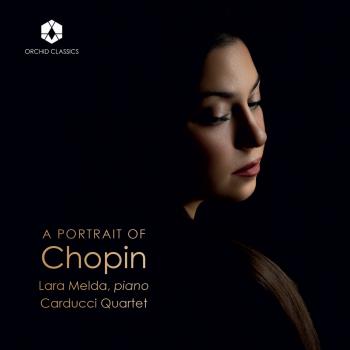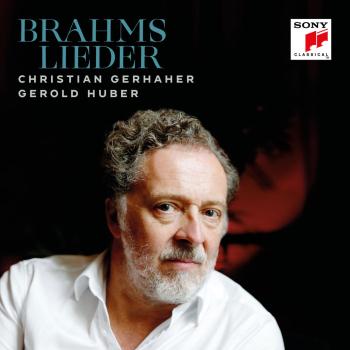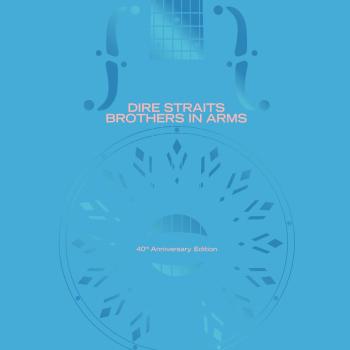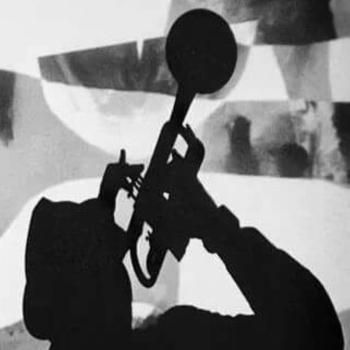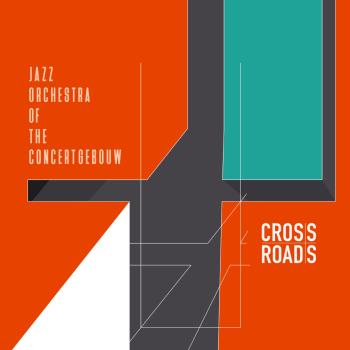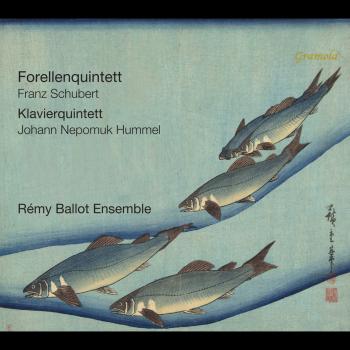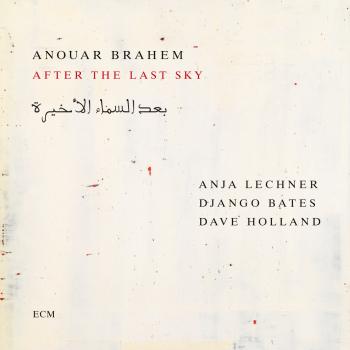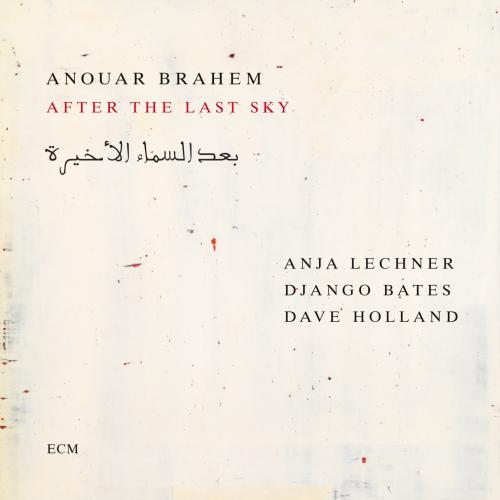
After the Last Sky Anouar Brahem, Anja Lechner, Django Bates, Dave Holland
Album Info
Album Veröffentlichung:
2025
HRA-Veröffentlichung:
28.03.2025
Label: ECM Records
Genre: Jazz
Subgenre: Contemporary Jazz
Interpret: Anouar Brahem, Anja Lechner, Django Bates, Dave Holland
Das Album enthält Albumcover Booklet (PDF)
Entschuldigen Sie bitte!
Sehr geehrter HIGHRESAUDIO Besucher,
leider kann das Album zurzeit aufgrund von Länder- und Lizenzbeschränkungen nicht gekauft werden oder uns liegt der offizielle Veröffentlichungstermin für Ihr Land noch nicht vor. Wir aktualisieren unsere Veröffentlichungstermine ein- bis zweimal die Woche. Bitte schauen Sie ab und zu mal wieder rein.
Wir empfehlen Ihnen das Album auf Ihre Merkliste zu setzen.
Wir bedanken uns für Ihr Verständnis und Ihre Geduld.
Ihr, HIGHRESAUDIO
- 1 Remembering Hind 01:52
- 2 After the Last Sky 05:42
- 3 Endless Wandering 08:11
- 4 The Eternal Olive Tree 04:00
- 5 Awake 08:49
- 6 In the Shade of Your Eyes 04:27
- 7 Dancing Under the Meteorites 04:25
- 8 The Sweet Oranges of Jaffa 07:13
- 9 Never Forget 07:49
- 10 Edward Said’s Reverie 02:58
- 11 Vague 03:13
Info zu After the Last Sky
Acht Jahre nach Blue Maqams kehrt Anouar Brahem mit einem gewichtigen Projekt zurück, das nach einer Verszeile des Dichters Mahmoud Darwish benannt ist, die lautet: „Wohin sollen die Vögel nach dem letzten Himmel fliegen?“ – After the Last Sky. Die bestechenden Kompositionen für Oud, Cello, Klavier und Bass setzen sich auf subtile Weise mit dieser metaphysischen Frage und ihren umfassenden Verstrickungen in einer unruhigen Zeit auseinander. Zwar stützt sich Brahem auf die traditionellen Formen der arabischen Musik, doch setzt er sich gleichzeitig stets mit Einflüssen aus aller Welt auseinander und lässt sich von Quellen aus unterschiedlichen Kulturen inspirieren. Der Bassist Dave Holland und der Pianist Django Bates sind erneut Teil des internationalen Quartetts des tunesischen Oud-Meisters, das hier nun durch die Cellistin Anja Lechner ergänzt wird.
Brahems musikalisches Verständnis mit Holland – erstmals auf dem Album Thimar von 1998 festgehalten – ist inzwischen legendär. „Daves Spiel verleiht mir Flügel“, sagte Anouar – eine Beobachtung, die sich auf dem Album wiederholt bestätigt. Django Bates’ Klavier, durchweg eine wichtige begleitende Kraft, steuert wirbelnde Soli bei. Das Album markiert das erste Mal, dass Anouar ein Cello in eine Formation einbaut. Anja Lechner, die eine stimmführende Rolle in der Aufnahme einnimmt, ist seit langem mit Brahems Kompositionen vertraut und hat sie u.a. in ihr eigenes Konzertrepertoire aufgenommen. Ihr Cello hat hier das erste und letzte Wort. After the Last Sky wurde im Mai 2024 im Auditorio Stelio Molo RSI in Lugano aufgenommen und von Manfred Eicher produziert. Das Album erscheint pünktlich zur Europatournee des Quartetts mit Konzerten in Frankreich, Deutschland, den Niederlanden, der Schweiz und Belgien.
Anouar Brahem, Oud
Anja Lechner, Violoncello
Django Bates, Klavier
Dave Holland, Kontrabass
Anouar Brahem
was born in 20 th October 1957 in Halfaouine in the Medina of Tunis. Encouraged by his father, an engraver and printer, but also a music lover, Brahem began his studies of the oud, the lute of Arab world, at the age of 10 at the Tunis National Conservatory of Music, where his principal teacher was the oud master Ali Sriti. An exeptional student, by the age of 15 Brahem was playing regularly with local orchestras. At 18 he decided to devote himself entirely to music. For four consecutive years Ali Sriti received him at home every day and continued to transmit to him the modes, subtleties and secrets of Arab classical music through the traditional master / disciple relationship.
Little by little Brahem began to broaden his field of listening to include other musical expressions, from around the Mediterranean and from Iran and India... then jazz began to command his attention. 'I enjoyed the change of environment,' he says' and discovered the close links that exist between all these musics'.
Brahem increasingly distanced himself from an environment largely dominated by entertainment music. He wanted more than to perform at weddings or to join one of the many existing ensembles which he considered anachronistic and where the oud was usually no more than an accompanying instrument for singers. A deepfelt conviction led him to give first place to this preferred instrument of Arab music and to offer the Tunisian public instrumental and oud solo concerts. He began writing his own compositions and gave a series of solo concerts in various cultural venues. He also issued a self-produced cassette, on which he was accompanied by percussionist Lassaad Hosni.
A loyal public of connoisseurs gradually rallied around him and the Tunisian press gave enthusiastic support. Reviewing one of Brahem's first performances, critic Hatem Touil wrote: 'this talented young player has succeed not only in overwhelming the audience but also in giving non -vocal music in Tunisia its claim to nobolity while at the same time restoring the fortunes of the lute. Indeed, has a lutist produced such pure sounds or concretised with such power and conviction, the universality of musical experience'
In 1981, the urge to seek new experiences became ever stronger and his departure for Paris, that most cosmopolitan of cities, enabled him to meet musicians from very different genres. He remained for four years, composing extensively, notably for Tunisian cinema and theatre. He collaborated with Maurice Béjart for his ballet 'Thalassa Mare Nostrum' and with Gabriel Yared as lutist for Costa Gavras’ film 'Hanna K.'.
In 1985 he returned to Tunis and an invitation to perform at the Carthage festival provided him with the opportunity of bringing together, for 'Liqua 85' , outstanding figures of Tunisian and Turkish music and French jazz. These included Abdelwaheb Berbech, the Erköse brothers, François Jeanneau, Jean-Paul Celea, François Couturier and others. The success of the project earned Brahem Tunisia's Grand National Prize for Music.
In 1987, he was appointed director of the Musical Ensemble of the City of Tunis (EMVT). Instead of keeping the large existing orchestra, he broke it up into formations of a variable size, giving it new orientations: one year in the direction of new creations and the next more towards traditional music. The main productions were 'Leïlatou Tayer' (1988) and 'El Hizam El Dhahbi' (1989) in line with his early instrumental works and following the main axis of his research. In these compositions, he remained essentially within the traditional modal space, although he transformed its references and upset its heirarchy. Following a natural disposition towards osmosis, which has absorbed the Mediterranean, African and Far-Eastern heritages, he also touched from time to time upon other musical expressions: European music, jazz and other forms.
With 'Rabeb' (1989) and 'Andalousiat' (1990), Anouar Brahem returned to classical Arab music. Despite the rich heritage transmitted by Ali Sriti and the fact that this music constitued the core of his training, he had in fact, never performed it in public. With this 'return' he wished to contribute to the urgent rehabilitation of this music. He put together a small ensemble, a 'takht', the original form of the traditional orchestra, where each instrumentalist plays as both a soloist and as an improviser. Brahem believes this is the only means of restoring the spirit, the subtlety of the variations and the intimacy of this chamber music. He called upon the best Tunisian musicians, such as Béchir Selmi and Taoufik Zghonda, and undertook thorough research work on ancient manuiscripts with strict care paid to transparency, nuances and details. For more information visit: http://www.anouarbrahem.com
Booklet für After the Last Sky

